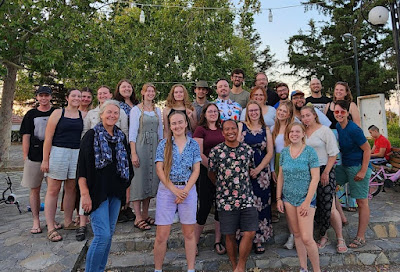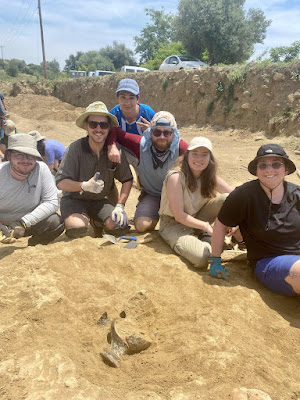Depuis 2016, j’ai eu la chance de voyager à maintes reprises en Grèce et de visiter Athènes à plusieurs occasions. C’était avec beaucoup d’impatience que j’attendais le début de mon séjour d’un an dans cette ville que je connais et que j’affectionne particulièrement, grâce au soutien de la bourse Franz et Neda Leipen. C’est donc en septembre dernier que j’ai établi résidence à l’Institut Canadien afin d’y poursuivre mes recherches doctorales, lesquelles ont grandement été facilitées par l’accès à aux abondantes ressources de la bibliothèque de l’ICG.
Quoi de plus enrichissant pour une étudiante en archéologie classique comme moi qu’une immersion dans cette ville qui regorge d’histoire, où chaque coin révèle des vestiges archéologiques fascinants! Les flâneries dans les rues d’Athènes, les visites de ses sites et musées archéologiques, les discussions autour d’un (ou deux, voire trois!) freddo espresso, les ascensions hebdomadaires du mont Lycabette ont à chaque fois nourri mon esprit d’idées et d’inspiration. En effet, en plus de ma thèse, plusieurs autres projets, tels que la rédaction d’articles et l’élaboration de présentations, ont vu le jour au cours des derniers mois. À ces fins, il faut tout de même ne pas passer outre la consultation des riches collections des autres instituts archéologiques, qui a elle aussi significativement contribué à l’avancement de mes travaux!
Il est aussi essentiel de mentionner toutes les précieuses rencontres que j’ai faites lors de ce premier trimestre. Entre les nombreuses présentations auxquelles j’ai assisté, ma participation à l’organisation de la CIG Graduate Student Conference et les fameux rendez-vous hebdomadaires au Red Lion, j’ai pu tisser des liens avec des chercheurs et des collègues de partout à travers le monde. Ces rencontres ont su non seulement égayer mon trimestre, mais aussi mener à des échanges plus que stimulants. Un mot tout particulier pour Jonathan Tomlinson, assistant directeur de l’ICG, et pour Athena Wakeling et Taryn Rankin, toutes deux stagiaires à l’Institut pour le trimestre, qui ont grandement enrichi ces quelques mois avec leur présence et leur bonne humeur.
Le soutien de la bourse Leipen me permet de réaliser à la fois mon rêve de m’établir – du moins pour un temps – en Grèce, ainsi que de poursuivre mes ambitions académiques. C’est avec un cœur empli de précieux souvenirs, l’esprit bourdonnant d’idées et de projets et un fort sentiment d’accomplissement que je m’envole vers Montréal pour les Fêtes. Je dois cependant avouer que je suis déjà fébrile à l’idée de mon retour pour le prochain trimestre, afin de continuer de pleinement profiter de cette expérience unique, de continuer de m’en imprégner.
Καλά Χριστούγεννα και Καλή
Χρονιά!
Justine Lefebvre, Boursière Neda et Franz Leipen 2023-2024










































